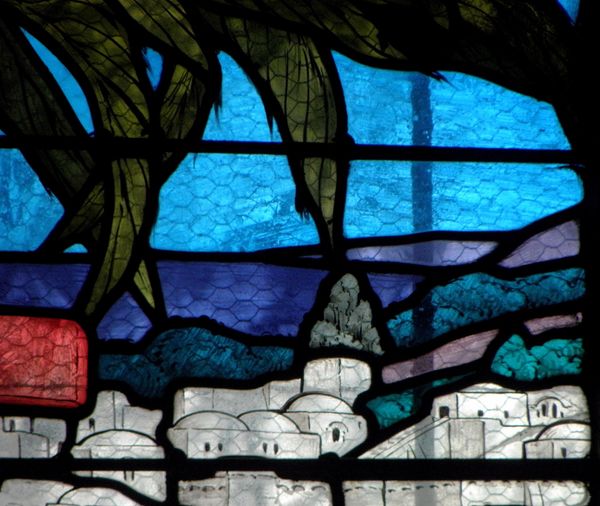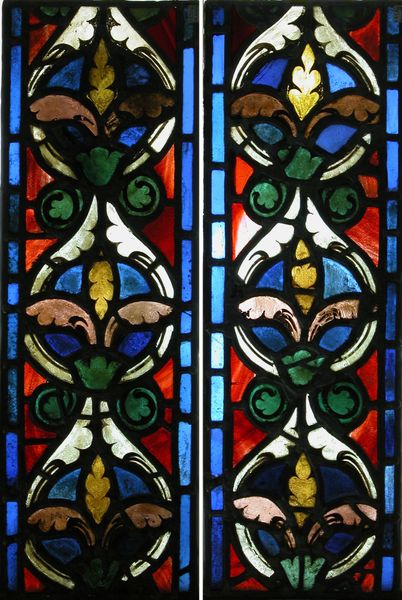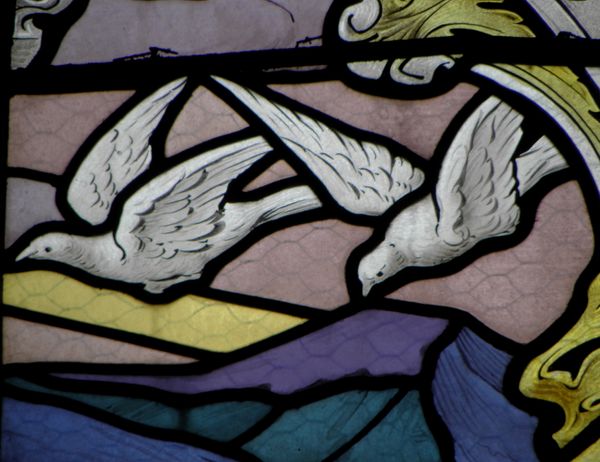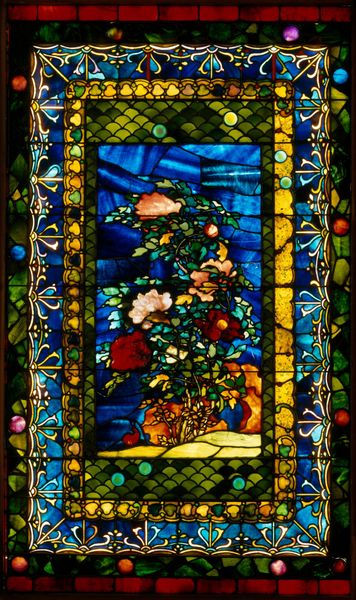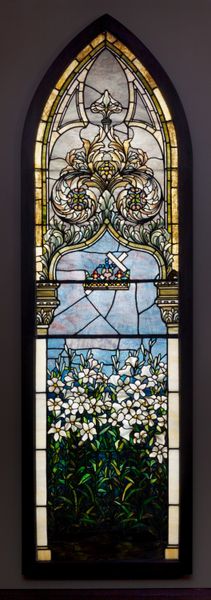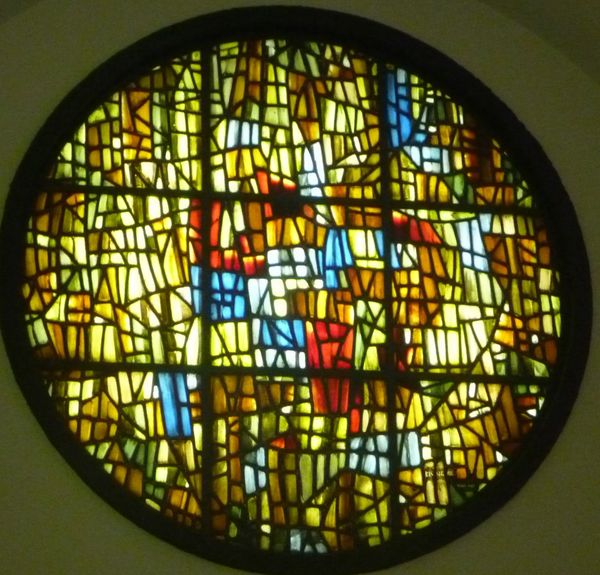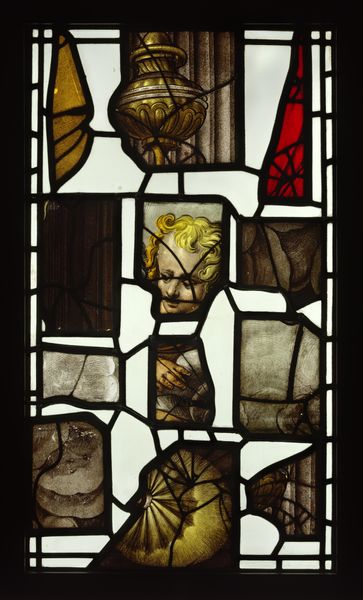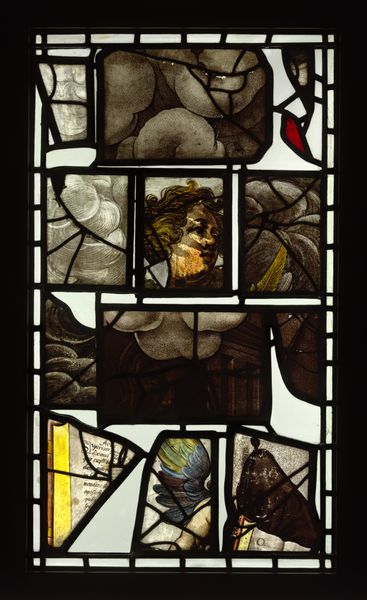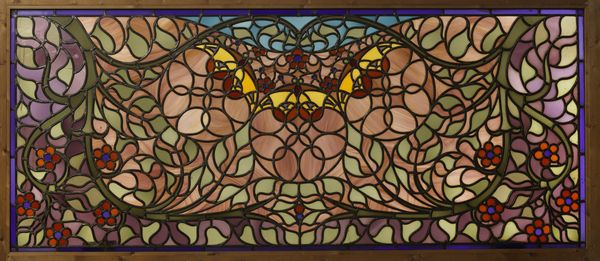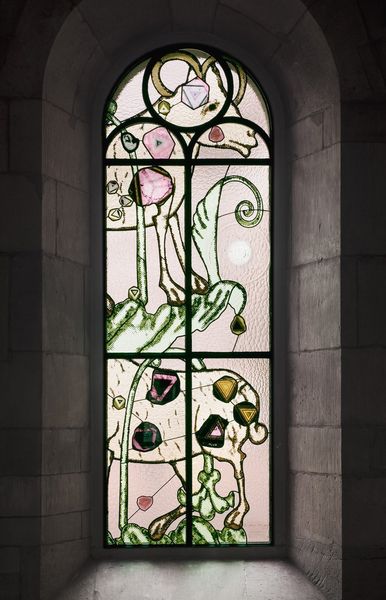
Jesus and the Samaritan woman. Eglise Saint-Sulpice de Fougères (detail) 1919
0:00
0:00
drawing, painting, glass
#
drawing
#
art-nouveau
#
painting
#
glass
#
symbolism
Copyright: Public domain
Curator: The translucency is immediately striking. Editor: Agreed. We’re looking at a detail of a stained-glass window titled "Jesus and the Samaritan Woman" from the Église Saint-Sulpice de Fougères. It's a work by Ludovic Alleaume, created in 1919. The artist employs the medium of glass with remarkable Art Nouveau and Symbolist sensibilities. Curator: Notice how Alleaume utilizes color—the turquoise foliage, pale mauve blossoms, the muted red column. They are strategically deployed within the black leading to create a vibrant yet strangely serene effect. The composition feels almost like a tapestry, abstracting the scene into decorative, interlocking shapes. Editor: And those interlocking shapes, that structure of lead holding each colored shard – it's about material resistance and the practical demands of holding this pictorial narrative aloft. The craftsmanship of this period elevated trades— glassblowers, lead workers, glaziers — into a respected artistic role. Were these local artisans, I wonder? The social fabric intertwined with the building’s decoration fascinates me. Curator: Undoubtedly. Semiotically, the foliage can also symbolize regeneration, a subtle nod perhaps to the spiritual cleansing offered in the biblical story, the color choices adding nuance. Notice, too, the flatness of the picture plane, characteristic of the Art Nouveau aesthetic. Editor: I’m curious about how this flat picture plane relates to notions of access and dissemination of these kinds of stories in a public setting – accessible because literally translucent. These churches played a vital role in distributing knowledge, influencing local economies through art commissions that sustained entire communities, especially post World War I like this one was. Curator: A compelling point, viewing religious institutions as both spiritual centers and drivers of economic and cultural production. Editor: In looking again at the floral patterns, a beautiful, albeit perhaps accidental, reminder that labor and artistry lie behind such an iconic story. Curator: Quite. The window’s inherent qualities do draw us to broader social histories. Editor: Always enriching.
Comments
No comments
Be the first to comment and join the conversation on the ultimate creative platform.
